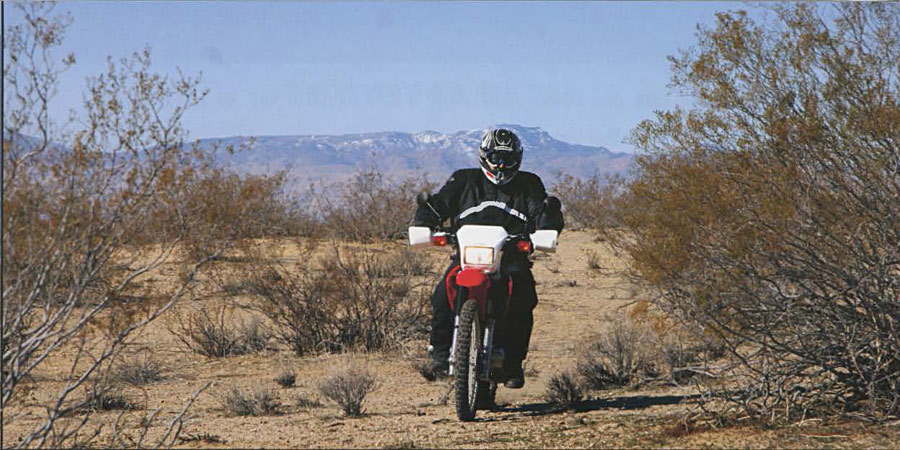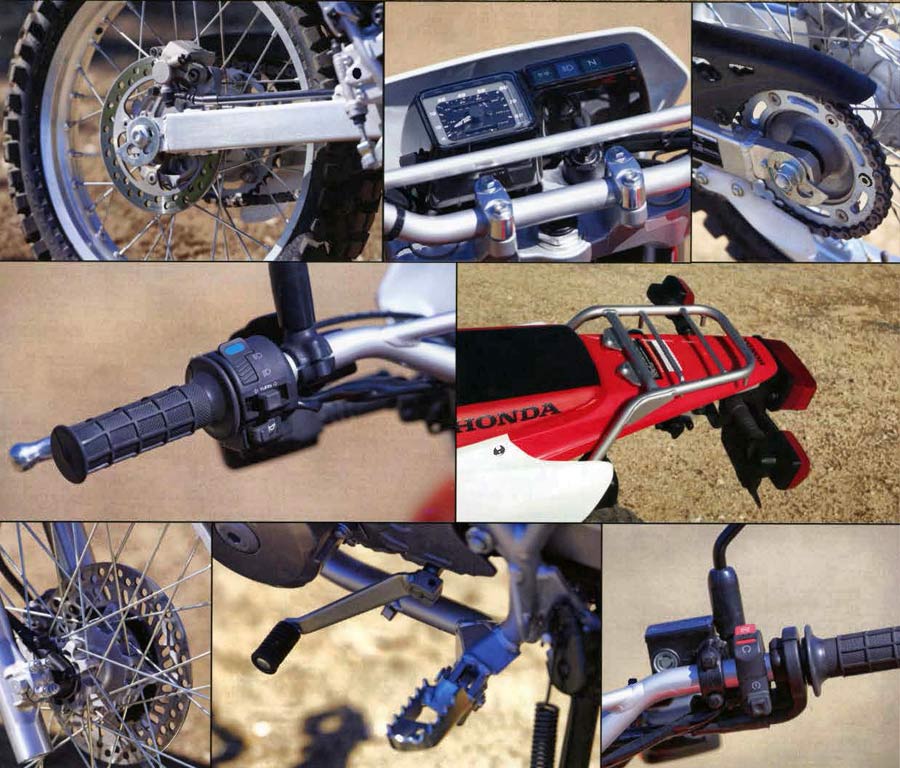Test Ride: 2008 Honda CRF230L Review
Article Index
In the late 1960s and the early 1970s, bikes like these were in their heyday. Everybody loved them. Why? Because they were fun, easy to ride, dependable, and you could do many types of riding with them. Compromise? Hardly! Back then they were called enduro bikes.
Today's dual sports have more reasons than ever why everyone should be riding them. This is why Honda's recent introduction of the CRF230L has caught the eye of savvy major media types. The CRF230L offers riders a chance to discover that having a versatile motorcycle is better than having a narrow-focused, more powerful motorcycle. As with most good dual sports, the CRF230L is greater than the sum of its parts.
 Honda describes the CRF230L as a "compact and lightweight adventure-loving dual-sport machine that willingly serves as an economical commuter, a motor-home runabout or a weekend outback-exploration vehicle ", and a "bike that can do it all."
Honda describes the CRF230L as a "compact and lightweight adventure-loving dual-sport machine that willingly serves as an economical commuter, a motor-home runabout or a weekend outback-exploration vehicle ", and a "bike that can do it all."
I would add to this by painting a comparative picture: think of a trail horse. It is stable, at home on tight, steep switchback trails and can carry you happily along on many types of trails ... or streets. You can ride into town - to the local mercantile, gallop across the plain, or ride up into them thar hills.
CRF230L BASICS
Most obvious, yet, least considered of any bike, and perhaps the greatest feature of this classic dual sport bike, is its upright seating. This provides ultimate control and comfort at the same time. It allows you to sit upright with your back straight. Foot pegs are positioned directly under your knees, and handlebar grips are within easy reach. The rider can easily adopt any riding position to suit a wide variety of conditions, while still applying the greatest amount of control, with the least amount of effort with this motorcycle.
The handlebar width of the CRF is perfect. Too wide and you snag obstacles, too narrow and you lessen stabilization leverage from the arms and torso.
The seat of the CRF is a slim line motocross style seat that affords comfort because of its lack of abrupt contours. Furthermore, the latest foam in this style of seat from Honda is highly refined. Only a couple of other after-market makers we know of can beat the comfort of these stock seats. During our initial testing of this machine, seat discomfort was not a factor.
 The dashboard on the Honda is simple and straight forward. The overall design, materials, and styling provide easy viewing and appear to be as durably built as previous similar models which have endured beyond the call.
The dashboard on the Honda is simple and straight forward. The overall design, materials, and styling provide easy viewing and appear to be as durably built as previous similar models which have endured beyond the call.
The ignition switch is tucked conveniently in front of the handlebars, yet behind the instrument cluster on the triple tree and is easy to access. Handlebar controls are well positioned, sized, and contoured to provide easy and intuitive grip and operation. The front brake function is hydraulic, while clutch operation is accomplished by cable.
Several nice features of the CRF are incorporated with the machine. For one, plastic brush guards are provided. Turn signals, headlights and taillights are all highly visible and shock mounted. The exhaust can or muffler includes a spark arrestor which is stamped as US Forestry Service approved.
Typically, these stock exhaust configurations outlast most other after-market versions. Another nice thing about the 230L is its GO button (electric starter), sometimes fondly referred to as the "magic button."



